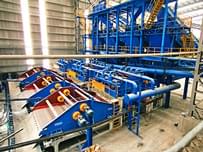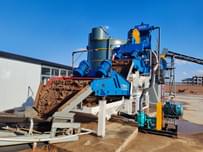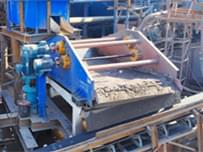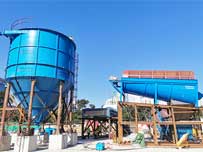The Automatic Control System Of High-Efficiency Thickener
The automatic control system for thickeners enables intelligent monitoring of the concentration process in large thickeners or deep cone thickeners. The flocculant dosage is automatically adjusted based on changes in ore feed rate, settling layer thickness, and comprehensive control strategies to ensure high underflow and satisfactory overflow, while maintaining uniform underflow discharge. This improves concentration efficiency and effectively enhances the quality of recycled water.
Main Control Items
In the entire wastewater treatment process, the automatic control of the high-efficiency thickener includes the control of flocculant addition, thickening process control, underflow discharge concentration control, and return sand flow control.
1. Flocculant addition
By measuring and calculating the feed concentration and feed flow rate, the ratio of solids to flocculant in the slurry is kept constant, ensuring a sufficient amount of flocculant in the slurry. The amount of flocculant added can be controlled by changing the speed of the flocculant pump.
2. Underflow concentration
The underflow concentration is connected to the speed of the underflow pump, and the underflow concentration is controlled by controlling the speed of the underflow pump. When the underflow concentration is high, the pump speed increases, the discharge volume increases, and the underflow concentration changes from thick to thin; conversely, when the underflow concentration is low, the pump speed decreases, the discharge volume decreases accordingly, and the underflow concentration becomes thicker. Only when the underflow concentration meets the requirements will the pump speed remain constant.
The advantages of Automatic control system
1. To stabilise the clear liquid layer and ensure the quality of the recycled water, the amount of flocculant used should be reduced.
2. Increase the return water volume and utilization rate of the thickener, and save water resources.
3. To prevent accidents such as muddy water runoff and rake damage, and to improve production stability.
4. A stable underflow discharge concentration helps improve the efficiency of subsequent processes or the effectiveness of tailings discharge.
5. Accurately detect the interface thickness of the clear liquid layer, sedimentation layer, mud layer, and heavy mud layer.















Send Message
Please write down your requirement and contact details in the following form. You can also send a message to us by this email export@lylzzg.com, we will reply to you within 24 hours.